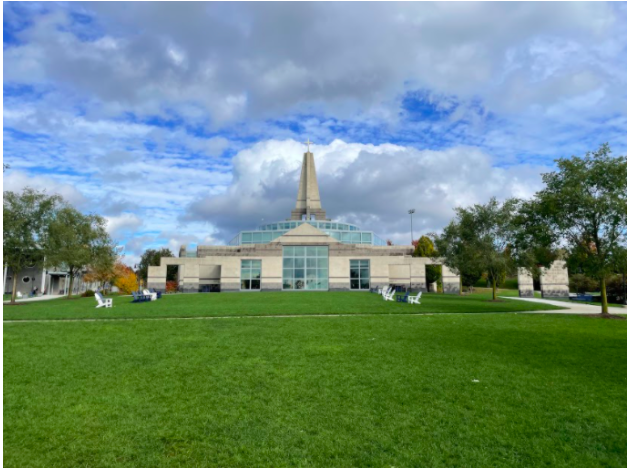Alex Gobran ‘23
Eshika Tangri ‘23
One of the most distinctive aspects of Episcopal is the campus’ grounds, with specific portions of the school’s budget being administered to support the high-quality maintenance and appearance of it. From the Campus Green to the different athletic fields, Episcopal and its grounds team dedicate both time and money to take care of the campus’ grounds.
Although the school does not explicitly release the exact monetary value of its landscaping budget, Mark Notaro, Director of Operations, comments that Episcopal has “a healthy landscaping budget that is comparable to some of the top peer schools nationwide.” Furthermore, according to Epicopal’s Fall 2020 Connections magazine, facilities accounted for 8.2% of the school’s nearly 50 million dollar operating expenses, meaning the landscaping budget could be close to $3,953,492.
Notaro also provides insight into where different portions of the landscaping fund are being distributed, elaborating, “There are three areas of concentration: sports turf, horticulture, and snow removal. The financial team revisits the budget every year and allocates money accordingly based upon the needs of that particular year.” Consequently, the distribution of funds fluctuates annually depending on necessary replacements, additions, or repairs that require attention, with a budget being “set aside for replacement costs of the fields, both artificial turf, as well as the natural grass fields each year.”

Notaro also emphasizes the role of the groundskeeping team in supporting the upkeep of Episcopal’s campus, saying, “The school maintains all of its athletic fields as well as the campus green through EA staff.” Grace Julian ‘23 comments on the role the groundskeeping staff seems to play at school, observing, “I feel like I constantly see the grounds crew working on some sort of project, dedicating attention to the athletic fields, or mowing the grass–whether it be before, during, or after school.”
Both students and faculty have noticed the time and resources apportioned to the campus green, giving it a neat and vibrant appearance because, as Notaro notes, “It’s an area that we walk by every day, and it is important that it looks its best.” In regards to the school’s investment in The Green, Logan Schlitt ’23 comments, “I believe that a lot of the budget should go towards the green because it is a common place for all the faculty, staff, and students.” With a similar sentiment, Sophia Hu ’24 adds, “It is essential that our green look nice because it is a place where many of the students, including myself, go during class to after lunch.”
Elizabeth Boruff ‘23 also believes that the upkeep of The Green is important, stating, “All of the visitors walk around The Green and it’s one of the first things they notice about the campus, so maintaining its appearance is really essential to make a good impression on prospective Episcopal families.”
Episcopal’s sizable landscaping budget has evidently made an impact on drawing new students to the school. Gaeli Keffer-Scharpf ‘23 says, “I remember visiting EA’s campus and my attention immediately being grabbed by how striking the campus is. The campus is one of the factors that ultimately caused me to choose Episcopal over other schools I saw.”

Photo courtesy of Ashley Kennedy ‘22